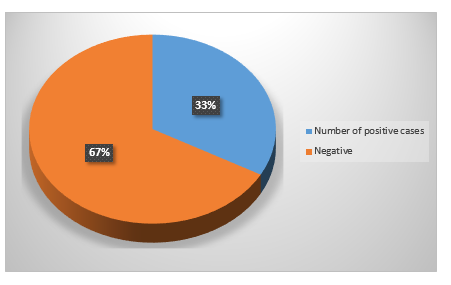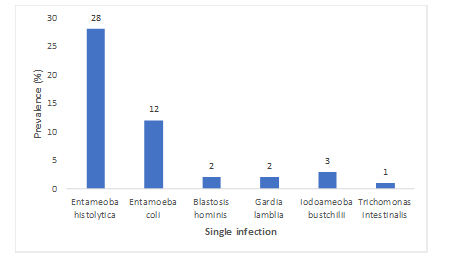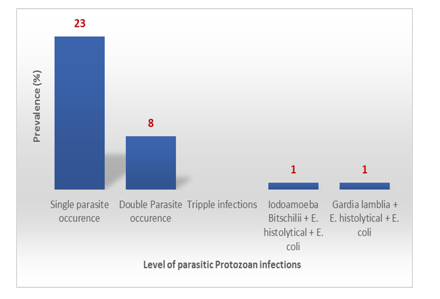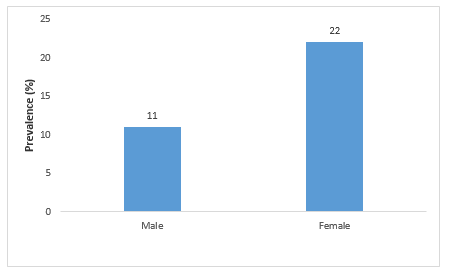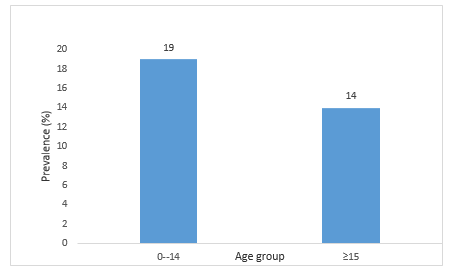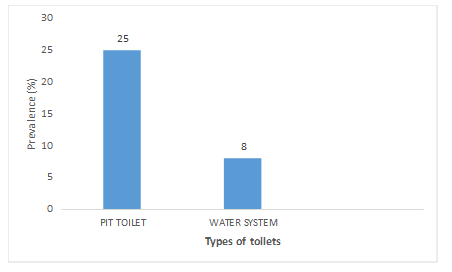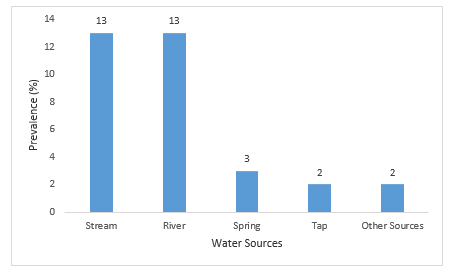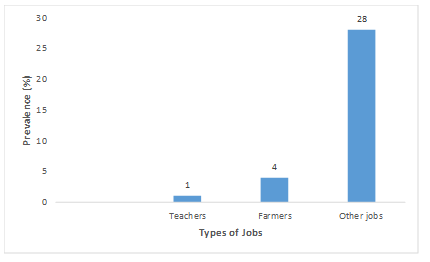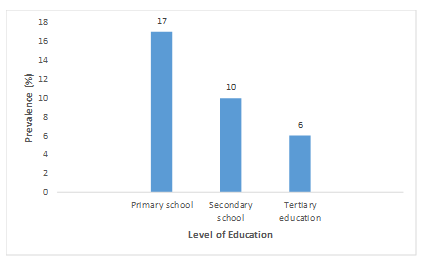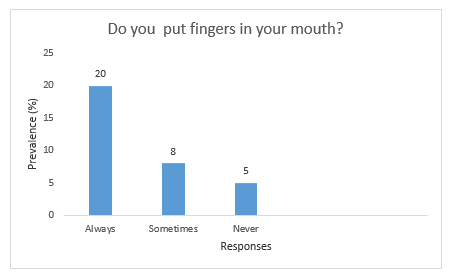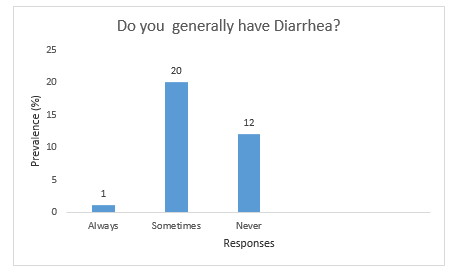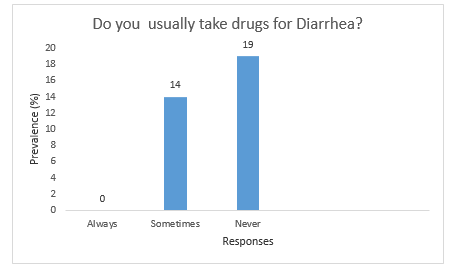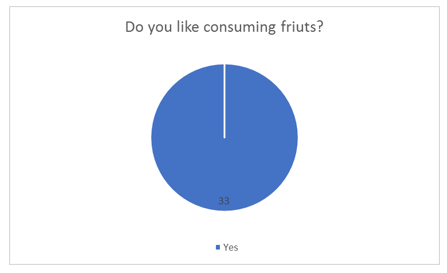Prevalence and Risk Factors of Gastrointestinal Protozoans in Ntamuchie, Mezam Division, North West Region, Cameroon
- 1. Department of Biomedical Sciences, University of Bamenda, Cameroon
- 2. Department of Microbiology, University of Dschang, Cameroon
- 3. Department of Medical Laboratory Science, University of Bamenda, Cameroon
- 4. Department of Animal Biology, University of Dschang, Cameroon
Abstract
Background: Parasitic infection remains a major public health problem worldwide, particularly in developing countries. This study was aimed at determining the prevalence and risk factors associated with gastrointestinal protozoans in persons living in the Ntamuchie community.
Method: A total of 100 people were sampled in the Ntamuchie community found in Bamenda III. A questionnaire was administered to people who accepted to sign the consent form. The stool samples were evaluated by parasitological methods including, direct wet-mounting, Formalin-either concentration formalin ethyl acetate concentration, for the detection of protozoan infections.
Result: From a total of 100 stool samples collected and analyzed, 33 samples were infected with at least one species of parasitic protozoans making an overall prevalence of 33.0%. Six different parasitic protozoans were seen with Entamoeba histolytica demonstrating the highest prevalence of 28%, followed by Entamoeba coli with a prevalence of 12 %, and Blastocystis hominis 3 %. Less occurring species were Giardia lamblia and Iodoameoba bustchilii with a prevalence of 2% each and lastly followed by Trichomonas intestinalis with a prevalence of 1%.
Conclusion: The result of the research indicates that the community of Ntahmuchie is highly contaminated with protozoan parasites. They were recommended to take preventive measures aimed at reducing the environmental contamination with gastrointestinal protozoans as the best prevention against the spread of gastrointestinal protozoans.
Keywords
• Protozoans
• Ntamuchie
• Trophozoites
• Prevalence
• Cameroon
Citation
Cedric Y, Christelle Nadia NA, Ebai CB, Ngoufo FN, Teke GN, et al. (2020) Prevalence and Risk Factors of Gastrointestinal Protozoans in Ntamuchie, Mezam Division, North West Region, Cameroon. Ann Public Health Res 7(2): 1097.
INTRODUCTION
Parasitic diseases contribute significantly to the burden of infectious diseases worldwide [1]. While most infections and death from parasitic diseases affect people in developing countries, they also cause significant illness in developed countries. Enteric protozoa continue to be the most commonly encountered parasitic diseases and cause significant mobility and mortality throughout developing regions of the world [2]. Numerous protozoans inhabit the gastro-intestinal tract of humans. The majority of these protozoans are non-pathogenic, or only result in mild disease. Some of these organisms can cause severe diseases under certain circumstances. Intestinal parasites belong to the most frequent causes of parasitic diseases that deteriorate the health of the global population [3]. The occurrence of these parasitic diseases is closely related to the economic status of the population, personal hygiene standards, and safe drinking water [4]. Intestinal parasite infections are globally endemic and have been described as constituting the greatest single worldwide cause of illness and disease. The World Health Organization estimates that 3.5 billion are infected with some types of intestinal parasites [5]. Previous studies on the prevalence of parasitic infection in different parts of the country have shown infection rates from 2% to 6% [6]. An estimated 60% of the world population is infected with intestinal parasites including amoebiasis and giardiasis. The incidence of infections is 50% in developed countries as compared to the incidence rate of 95% in developing countries [7]. The epidemiology of intestinal parasitic infections shows that these parasites are found in every age group and both sexes. However, the incidence is high in some areas and some age groups. In a study carried out in Buea, out of 356 outpatients 100 (28.1%) were infected with intestinal protozoans [8]. An intestinal protozoon is transmitted by the fecal-oral route (soiled hands, ingestion of food or water contaminated with feces) and exhibits a life cycle consisting of a cyst stage and a trophozoite stage. This study was aimed at determining the prevalence and risk factors associated with gastrointestinal protozoans in persons living in the Ntamuchie community, in order to contribute to existing data on the epidemiology of protozoans in Cameroon, and make recommendations for further regional and nationwide control programs.
MATERIAL AND METHODS
Study site
This study was carried out in Ntamuchie. Ntamuche is found in Bamenda III Council, Mezam Division, North West Region of Cameroon (Figure 1).
Figure 1 Peri-urban land situation of Bamenda III with Ntamuchie in the map [9].
It is a semi-urban area in Bamenda III. Bamenda is the chief town of the North West Region which is a multicultural and metropolitan town whose inhabitants are engaged in various socio-economic activities. The town has both government and private hospitals taking care of over 650 360 inhabitants and other villages around its localities.
Study design
This was a cross- sectional and random study, in which subjects were persons living in Ntamuchie community.
Study period
This study was carried out between May and June of 2020.
Inclusion criteria and Exclusion criteria
All those who signed the informed consent form and children whose’s parents signed for them were included in the study. All those who refused to sign the consent form were excluded from the study.
Sample size determination
The sample size was calculated using the Lorentz’s formula [10] at 95% confidence interval:
n =z2 p(1-P)/d2
where,
n = required sample size
z = confidence level at 95% (standard value of 1.96)
p = estimated prevalence of the infection under investigation
The prevalence of intestinal protozoa in the North-west region was 19.4% with E. histolytica being the most prevalent protozoan species, with an overall prevalence of 17.2% (38).
d = margin of error at 5 % (standard value of 0.05)
If
z = 1.96
d = 0.05
p = 19.4 % = 0.194
P= 17.2% = 0.172
(0.172) (1-0.194)/
Hence n= 213.03=213
Hence a total of 213 people in the Ntamuchie community in Bamenda III were supposed to be sampled. This sample size was not attained due to the corona virus outbreak.
Data collection
A structured questionnaire was used to collect data on socio-demographic and risk factors of intestinal protozoans. Socio-demographic data included age, sex, profession, and the highest level of educational attainment. Questions on factors that influenced the prevalence of gastrointestinal protozoans, sources of water bodies and type of toilet used in the locality were asked. Questionnaires were administered in English and exceptionally in oral Pidgin English where necessary.
Sample collection and Laboratory analysis of stool sample
Labelled clean proof containers were given to participants for the collection of stool samples. The Formalin-either concentration technique was used to concentrate parasites for identification under the microscope. A direct wet mount with normal saline was done to identify motile trophozoites. 1g of stool sample was emulsified in 3mls of 10% Formalin, it was sieved into a beaker and later on transferred into a tube. Four (4) ml of formalin were added in the tube to make it to 7ml formalin. After 3ml of ether were added into the tube, it was well corked mixed and then centrifuged at 3000 Rpm for 5 minutes to obtain sediments. The supernatant was poured out and only the sediment was left in the tube. A drop of iodine was added to each sediment to ease the visibility of the cyst of protozoans on the slide. It was covered with a cover slide and viewed using the x10 and x40 objectives of the light microscope.
Management and Statistical analysis
The prevalence of intestinal protozoan was calculated as the proportion of positive samples. Data collected from the field were presented using descriptive statistics. Data were entered into Microsoft Excel and analyzed.
RESULTS AND DISCUSSION
Results
Figure 2 shows the overall prevalence of parasitic protozoans.
Figure 2 Overall prevalence of parasitic protozoans among the population in Ntamochie.
It follows from the analysis of this figure that out of the 100 study participants, 33 were infected with at least one species of parasitic protozoans making an overall prevalence of 33.0%.
From figure 3 below, out of the 100 samples examined for parasitic protozoans, 6 different parasitic protozoans were seen with Entamoeba histolytica demonstrating the highest prevalence of 28%, followed by Entamoeba coli with a prevalence of 12 %, and Blastoisis hominis 3 %. Less occurring species were Giardia lamblia and Iodoameoba bustchilii with a prevalence of 2% respectively and lastly Trichomonas intestinalis with a prevalence of 1%.
Figure 3 Prevalence of Single protozoan infections
Figure 4 shows the prevalence of parasitic infection based on a double and triple infection.
Figure 4 Prevalence of parasitic infection based on double and triple infection.
It appears from this figure that the occurrence of single parasite infection was at 23% while double parasite occurrence was at 8%. For triple infections, the occurrence of Iodoamoeba buschilii + E. histolytica + E. coli, and Giardia lamblia + E. histolytica + E. coli were at 1% each.
Figure 5 presents the prevalence of parasitic protozoans with respect to sex. Females presented the highest prevalence (22%) of gastrointestinal protozoans meanwhile males showed a prevalence of 11%.
Figure 5 Prevalence of parasitic protozoans with respect to Sex.
Figure 6 presents the prevalence of parasitic protozoans according to age range. From this figure infection in the different age group, 0-14 years was higher (19%) but lower (14%) in the age group 15 and above.
Figure 6 Occurrence of parasitic protozoans according to age group.
Figure 7 presents the frequency of parasitic protozoans with respect to the type of toilet used. It follows that 25% of positive cases were from participants using pit toilets, and 8% from those using water closet system toilets.
Figure 7 Prevalence of parasitic protozoans according to the type of Toilet used.
Figure 8 shows the prevalence of parasitic protozoans based on sources of drinking water. This figure shows that the highest frequency of infection occurred in people who used streams and rivers (13%) as their sources of water.
Figure 8 Prevalence of parasitic protozoans based on the source of water.
Figure 9 presents the frequency of parasitic protozoans based on the profession. From this figure, we observed that out of the 33 positive samples, 28% were from persons in other works of life, while only 4% and 1% were farmers and teachers respectively.
Figure 9 Prevalence of parasitic protozoans based on Job type
Figure 9 presents the frequency of parasitic protozoans based on the profession. From this figure, we observed that out of the 33 positive samples, 28% were from persons in other works of life, while only 4% and 1% were farmers and teachers respectively.
Figure 10 is shown the prevalence of intestinal parasites in relation to the level of education. Our findings showed that 17 % of those with protozoan infections had just primary education, 10% secondary school and lastly 6% who had attained tertiary education.
Figure 10 Prevalence of parasitic protozoans based on level of education attained.
Figure 11 shows the frequency of parasitic protozoans based on whether respondents put fingers and other objects into their mouth. The highest prevalence occurred among those who had the habit of always putting fingers and other objects into their mouths (20%) followed by (8%) those who sometimes do this.
Figure 11 Prevalence of parasitic protozoans based on whether respondents put fingers and other objects into their mouths.
The Frequency of parasitic protozoans based on whether respondents generally had Diarrhea or Dysentery is presented in Figure 12.
Figure 12 Prevalence of parasitic protozoans based on whether respondents generally had Diarrhea.
From this figure we notice that the frequency of parasitic protozoans was higher among those who sometimes had diarrhea (20%) followed by 12% for those who never had and lastly 1% in those who always had diarrhea.
The frequency of parasitic protozoans based on when respondents took treatment for diarrhea is presented in figure 13.
Figure 13 Prevalence of parasitic protozoans based on when the respondents take drugs for diarrhea
We observe that the highest frequency of parasitic protozoans was seen in those who never use to take drugs for diarrhea and followed by those who sometimes take drugs for diarrhea (4%) and 0% in those who always take drugs for diarrhea or dysentery.
Figure 14 shows the frequency of parasitic protozoans with respect to whether the respondent consumes fruits.
Figure 14 Prevalence of parasitic protozoans with respect to whether the respondent consumes fruits.
This figure indicates that all the participants who were positive for parasitic protozoans had the practice of taking fruits such as pear, pawpaw, and others.
Discussion
The result of this cross-sectional study carried out in the community of Ntamuchie shows, that 33% of the sample population were infected with gastrointestinal protozoan which was more than the results reported from a study in the Eastern region of Nepal (18.5%) [11]. This high prevalence may be due to poor hygienic condition and environmental hygienic habits practiced by people in the community, such as, playing in dirty surroundings of houses, putting on dirty dresses, playing with fingers on the ground, putting dirty fingers and objects into the mouth, not washing fruits and hands before eating, picking food from the ground and eating and moving bare footed. The most prevalent intestinal protozoans were E. histolytica (28%) and E. coli (12%). The results of this study confirm with those reported in Bambili, Cameroon, where E. histolytica (8.9%) and E. coli (7.6%) had the highest prevalence of intestinal protozoans [12].
Intestinal protozoan infection was high among females (22%) than males (11%). A similar study conducted by Payne et al. [12] in Cameroon also showed a higher prevalence of infection in females as compared to males. This higher prevalence in females may be due to the various activities in which females are involved such as farming and because they handle the food they tend to eat unwashed/unboiled food, vegetables, or salads which may be contaminated with protozoan cysts. The prevalence was high in the age of 0-14years than in the age group 15 and above. This result is similar to that observed from the Centre region of Cameroon where the prevalence of (50%) was reported in the age group 8-15 [13]. In Tanzania a result of 20.9 % was in the age group 5-14, followed by the age 21and above 18.9% and the result is also similar to the result gotten in Ethopia where the result was high in the age group 11-15 21.8%, 25% in the age 21and above [14]. The result being high in the age group 0-14 could be due to the fact that this age group do not respect hygiene and sanitation practices they do not drink clean potable, eat unwashed food and their immune system is not well developed
The results show that pit toilet (25%) is a major risk factor as compared to the water system (8%). These results are similar to earlier observations noticed in the Newbell Central Prison Cameroon with a percentage of 25.6% for pit toilet and 18.7% water system [15]. However, they are different from the results from Ethiopia where pit toilet had 3% and 31% for private toilets [14]. This high percentage for pit toilets could be because many people tend to use such toilets even passerby and most of the time these passersby are infected. Farming had a percentage of 4%, persons employed 1%, and others 28% which is very low compared to results obtained from the West region which farming had a percentage of 38.5% and employed 35.5% [16].
This high percentage of other job activities of life could be because it involves so many activities like pupils, students, food traders, and others. This study shows the prevalence of infection with respect to double and triple infection with E. histolytica and E. coli 8%, E. histolytica and Blastocis hormonis 2%, Iodoameoba bustchilii, E. histolytica, and E. coli 1% and Giardia lamblia E. histolytica, and E. coli 1%. These results are higher than the result recorded in the Centre region Cameroon 3.84% [17, 13], but lower than the results reported from Palestine with double infection 10% and triple 3% [18]. This mixed infection could be because food, fruits, and water sources are likely contaminated with more than one parasite taken by the various individuals.
This study shows parasite infection with respect to water sources. With tap water 13%, spring 13%, stream 3%, river 2%, and others 2% which is different from what researchers from Ethiopia recorded where tap water was 24% lower than stream 34% [14] and spring 26.9% and stream 29.8%. This could be because the water bodies are not decontaminated or not well decontaminated whereas the water bodies are contaminated also based on the fact that people may defecate or urinate which can be drained in to water bodies. Putting an object in the mouth is a high risk of gastrointestinal infection. Putting fingers and other objects into the mouth is not safe because it’s not certain if they are free from parasites. Diarrhea can act as an indicator of gastro intestinal infection a high proportion of the infected individuals sometimes (20%) have diarrhea which is similar to the result obtained from Western Iran where those who presented with diarrhea had a percentage of 37.8% and those who did not 27.7% [19]. The percentage of those having diarrhea is highly likely to the fact that they are already infected with the parasite and are presenting symptoms and for those not having is likely because their immune systems are strong enough to resist the parasite.
CONCLUSION
The results of our study indicate that the community of Ntamuche is highly contaminated with protozoan parasites. The population was recommended to take preventive measures aimed at reducing environmental contamination with parasites as the best prevention against the spread of gastrointestinal protozoans. The most reliable precautions were to emphasize the importance of personal hygiene, public sanitation, health education, and sanitation of the environment
ACKNOWLEDGEMENT
The author sincerely thank the laboratory management staff of Green Light Vision Foundation especially Mr. Sama Cedric who took time to ensure that the work was well done.
ETHICAL APPROVAL AND CONSENTS TO PARTICIPATE
The ethical approval to carry out this study was obtained from the Ethical Review Board of the Faculty of Health Sciences University of Bamenda.
REFERENCES
- Vivornpun S, Srinchaipon N, BunKasem U, Srirungruang S, Nuchprayoon S. 2016. Prevalence of intestinal protozoan infection among children in Thailand. A large scale screening and comparative study of three standard detection methods, the southeast Asian journal of tropical medicine and public health. 2016; 6: 1223-1234.
- Khalesd A, El-Aziz M. Detection and differentiation of human protozoan parasite in stool specimen by using multiplex, Allele specific polymerase chain reaction. Zagazig university medical journal. 2013; 6: 1-4.
- Dawit A, Kibru E, Nagesh S, Gebreselassie S, Fetene D, Jemal A. Medical parasitology. 2006; 1-139.
- StrkoKova G, Mravcova K, Barbusinova E, Musha R, Varady M, Goldova M. Prevalence of intestinal parasites in children living in Various living condition in, slovaKia j pediatr perinatal child health. 2019; 3: 174-185.
- Shahid SB, Wazib A, Chowdhury A, shamsuzzaman SM, Mamum Z. A study on different laboratory methods for diagnose of intestinal protozoal infection. Bangladesh medical journal. 2011; 40: 47-49.
- RoKni MB. The present status of human helminthic diseases in Iran. Ann tropical parasite. Ann trop med parasitol. 2008; 4: 283-295.
- Behailu H, Geleto A, Muhedin R. Prevalence of feco-oral transmitted protozoan infections and association factors among university student in Ethiopia a cross sectional study. BMC infectious diseases. 2019; 499.
- Vimbuh J, Ntonifor H, Ojong T. The incidence, intensity and most mobility of human parasitic protozoan infections in gastrointestinal disorder outpatients in Buea sub-division Cameroon. J infect Dev Ctries. 2009; 1: 38-43.
- Jude Ndzifon Kimengsi, Balgah Sounders Nguh, Achia Soulange Nafoin. Peri-Urban Land Use Dynamics and Development Implications in the Bamenda III Municipality of Cameroon. Sustainability in Environment. 2017; 2 : 2470-6388.
- Naing L, Winn T, Rusil BN. Practical issues in calculating sample size for prevalence studies. Arch Orofac Science. 2007; 1: 9-14.
- Sah RB, Paudel IS, Baral R, Poudel P, Jha N, Pokharel PK. A study of prevalence of intestinal protozoan infections and associated risk factors among the school children of Itahari, Eastern region of Nepal. Journal of Chitwan Medical College. 2013; 3: 32-36.
- Payne V, Awantu M, Anandmo C, Yamssi C. Prevalence and risk factors of gastrointestinal infection amongst children in Bambili. Asian journal of epidemiology. 2020; 13: 31-36.
- Oyong G, lehman G, Samuel F, bilong B. Multiparasitism among school children of Akonolinga nyong of mfoumou division centre region Cameroon. 2019; 1-21.
- Hablamu S, Tekelia D. Prevalence and factors associated with intestinal parasites among under five children attending health center northwest Ethopia. BMC infectious diseases. 2019; 259.
- Kuele T, mbwang G, Nguele M, Same A. prevalence of intestinal parasitic infection among inmates of newbell central prison Cameroon. Journal of tropical disease. 2019; 35: 1-10.
- Fakou R, Neck J. Persistence of tenia solium amongst others human gastrointestinal parasite Bamboutos locality west region Cameroon. J Appl Biosci. 2019; 144: 14813-14821.
- Aka NA, kouadio-yupo E, Pecome G, Dibert Z, Pecome L, Constante L, et al. prevalence of infection among maid in Abidjan, cote d’lvore juonal of Badenolig and parasitoly. 2016; 7: 1-5.
- Amer A, Suheir E, Dumaldi k, Hanan A, Abdeen Z, Nasereddin A. prevalence of selected intestinal protozoan infection in Marginaliseg rural communities in Palestine. BMC public health. 2019; 19: 1667.
- Hamid k, Haghidh A, Salehi R, Azargashb E. Prevalence, risk factors and symptoms associated to intestinall disorders in nevaland western Iran. Rev Intst Med Trop Sao Paulo. 2016; 58: 42.
![Figure 1 Peri-urban land situation of Bamenda III with Ntamuchie in the map [9].](https://www.jscimedcentral.com/public/assets/images/uploads/image-1711778715-1.PNG )
